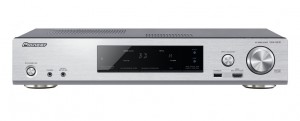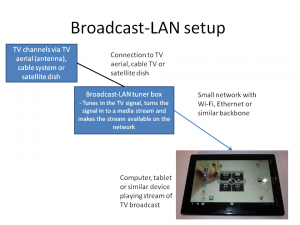 In my first part of the series on this year’s International Funkaustellung 2013 trade show, I had covered the personal IT trends that were being underscored here. These were the rise and dominance of the highly-capable Android smartphone, the arrival of the large-screen “phablet” smartphones, Sony offering high-grade digital-photo abilities to smartphones and improving on these in their smartphones, the convertible and detachable-keyboard notebook-tablet computers becoming a mature device class as well as the arrival of the smartwatch as a real product class.
In my first part of the series on this year’s International Funkaustellung 2013 trade show, I had covered the personal IT trends that were being underscored here. These were the rise and dominance of the highly-capable Android smartphone, the arrival of the large-screen “phablet” smartphones, Sony offering high-grade digital-photo abilities to smartphones and improving on these in their smartphones, the convertible and detachable-keyboard notebook-tablet computers becoming a mature device class as well as the arrival of the smartwatch as a real product class.
Now I am focusing on what is to happen within the home for this second part.
Television-set and home AV technology
The television set is still considered an integral part of the connected home, especially as a group-viewing display device for content delivered via the Internet or the home network.
4K Ultra-high-definition TVs
Most of the activity surrounding the 4K ultra-high-definition TV technology has been with manufacturers releasing second-generation 4K models with the focus on the 55” and 65” screen sizes. It is also the time when the HDMI 2.0 connection specification, which yields the higher throughput for the 4K ultra-high-definition video plus support for 32 audio streams and more, has been called and most of these manufacturers are accommodating this in their second-generation designs whether baked in or as a firmware update as in the case of Sony’s newly-released 55” and 65” 4K designs.
Panasonic had initially held off with releasing a 4K set but released the Smart VIERA WT600 which is a 55” OLED 4K which had the “second-generation” credentials like the aforementioned high-speed HDMI 2.0 connection. LG had launched a pair of 4K models with one having a 50-watt soundbar and “micro-dimming” which adjusts the screen brightness in an optimum manner for the video material. Even Haier, the Chinese consumer-goods manufacturer had jumped in on the 4K bandwagon.
There are still the very-large-screen 4K UHDTV sets with screens of 84” to 94”. Now Samsung have launched 4K models with astonishing screen sizes of 98” and 110”.
At the moment, there is some work taking place concerning the delivery of content with the 4K screen resolution. Sony have set up a download-based content delivery service with the FMP-X1 hard-disk-based media player and based around a rental-based or download-to-own business model. Samsung is partnering with Eutelsat to deliver 4K UHDTV broadcasts to the home using satellite-TV technology as well as others working with the Astra satellite team to achieve a similar goal.
OLED TV screens
Another key trend that is affecting the “main-lounge-room” TV set is the OLED display reaching 55” and above in screen size. Those of you who own or have used a Samsung, HTC or Sony smartphone will have seen this technology in action on the phone’s display.
Samsung and LG have increased their factory output of these large-size screens which has allowed the material price of these screens to become cheaper. Here, it has allowed for more manufacturers to run an OLED model in their lineup, whether with a flat display or a convex curved display. Most of these models are 4K displays and have a 55” screen. Haier even went to the lengths of designing a 55” flat OLED TV that is in a housing that can’t easily be tipped over while LG had fielded a model with a flat OLED screen and a model with a curved OLED screen.
For that matter, LG improved on the aesthetics of the flatscreen TV by implementing a “picture-frame” design which make the TV look like a beautiful large piece of art on the wall. This was augmented with a screenshow collection of artworks that are part of the TV’s firmware.
Other TV and home-AV trends
Brought on by the Philips Ambilight background-lighting initiative, some of the manufacturers are integrating LED-based background lights in to their TVs to provide the complimentary lighting. Philips even took this further with the ability to synchronise LED-based multicolour room lighting with their set’s Ambilight background lighting.
What I also suspect is happening with TVs destined for the European market is that they will be equipped with DVB-T2 digital TV tuners. This is to complement the arrival of DVB-T2 TV-station multiplexes in various countries that are primarily offering HDTV broadcasts.
Sony is also taking a stab at high-grade home audio by building up a file-based music distribution system that implements hard-disk-based media players with one downloading the music as files and syncing it to these hard-disk media players. Like SACD, this technology is meant to sound as good as the studio master tapes. Comments have been raised about the provision of two different files for each album or song – one that is mastered to best-quality standards where there is the full dynamic range another file, packaged as an MP3 perhaps, that has compression and limiting for casual or “noisy-environment” listening.
The home network
TV via the home network
Broadcast-LAN devices
There has been a fair bit of activity on the “broadcast-LAN” front courtesy of the SAT-IP initiative for satellite TV which I previously touched on. This has manifested in a few satellite-based broadcast-LAN boxes that are equipped with multiple tuners showing up at this year’s show including one 2-tuner model from Devolo and one four-tuner DLNA-equipped model from Grundig.
Similarly, SiliconDust have brought in the SimpleTV service model to Europe which provides a network-hosted PVR and broadcast-LAN setup for regular TV. I would see this has having great traction with Europeans because all of the European countries have free-to-air offerings anchored by the well-funded public TV services like BBC, ARD/ZDF, France Télévisions, and DR which yield content of high production and artistic quality. AVM have also used this show to launch a SAT-IP-compliant broadcast-LAN setup for the DVB-C cable-TV networks that exist primarily in Europe but links to an existing Wi-Fi network segment which wouldn’t let the device do its job in an optimum manner.
Other TV-over-Internet technology
Philips has also joined in the “over-the-top” cloud-driven TV party that Intel and Google were in by putting up their concept of a “virtual-cable” service delivered via the Internet.
LAN technologies
Wi-Fi wireless networks
Even though the 802.11ac high-speed Wi-Fi wireless network standard isn’t ratified by the IEEE, nearly every major manufacturer of home-network equipment has at least one, if not two, wireless routers that support this technology. Some even supply USB network-adaptor dongles that allow you to benefit from this technology using your existing computer equipment.
HomePlug powerline networks
There have been a few HomePlug AV2 adaptors appearing with the Continental-style “Schuko” AC plug on them, such as the Devolo dLAN 650+ and the TP-Link TLP-6010 but the manufacturers wouldn’t really state whether these fully work to the HomePlug AV2 standard. They are typically rated at 600Mbps for their link speed and are at the moment the Single-stream type.
As for Devolo, they have launched the dLAN 500 WiFi which is a HomePlug AV 500 “extension access point” for wireless networks. Here, Devolo have made an attempt in the right direction for “quick setup” of multiple-access-point Wi-Fi segments by implementing a “settings-clone” function. But this works using the HomePlug AV backbone and only where you use multiple dLAN 500 WiFi access points on the same backbone.
Home Automation
Some of the appliance manufacturers have gone down the “connected path” by equipping some of the top-end appliance models with Wi-Fi connectivity and implementing a manufacturer-developed dashboard app for the iOS and/or Android mobile platform. Here, these apps either work as a secondary control surface for the appliance or provide extended setup and configuration options that aren’t available on the appliance’s control surface.
Samsung went about this with their high-end washing machine where they use this connectivity as a remote “dashboard” so you can know if the machine is underway and on the correct cycle or be able to be notified when the washing is done. Philips uses a similar setup for their multifunction countertop cooker but it allows you to determine a recipe on your phone and dump that down to the cooker. But this, like a similarly-equipped coffee machine was really a proof-of-concept machine.
Thomson had offered a convincing home-automation kit which uses its own connectivity technology but can connect to Z-Wave or Zigbee networks using a bridge module. My question about this kit is whether you can start out with what is supplied but grow beyond by adding in the extra modules from Thomsom or other third parties as required.
Other Trends
This year has become a key year for vehicle builders to push forward connected app-driven infotainment and telematics in their vehicles that will hit European roads. It implements a mobile broadband connection to the car via the driver’s smartphone or another device along with apps for popular online services optimised for safe use in the car or to work with the car.
It has been exemplified by Ford implementing a “SYNC AppLink” setup that allows users to control favourite smartphone apps from their vehicle’s dashboard, including the ability to support voice control.
Conclusion
It certainly shows that at this year’s IFA, the personal IT products like tablets, convertible notebook computers and large-screen smartphones are becoming a very diverse and mature product class while the 4K ultra high definition TV technology is gaining some traction as a real display class.



